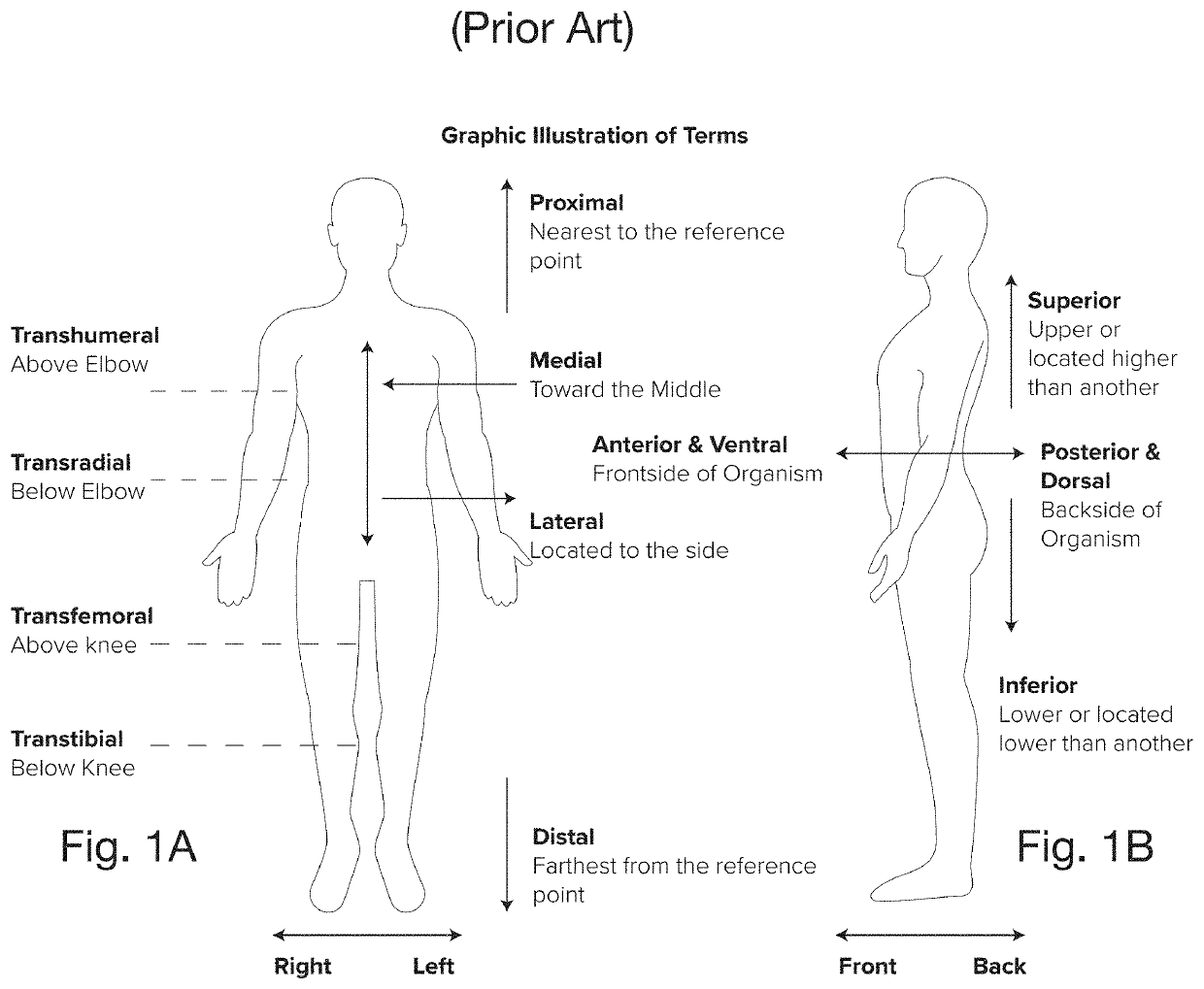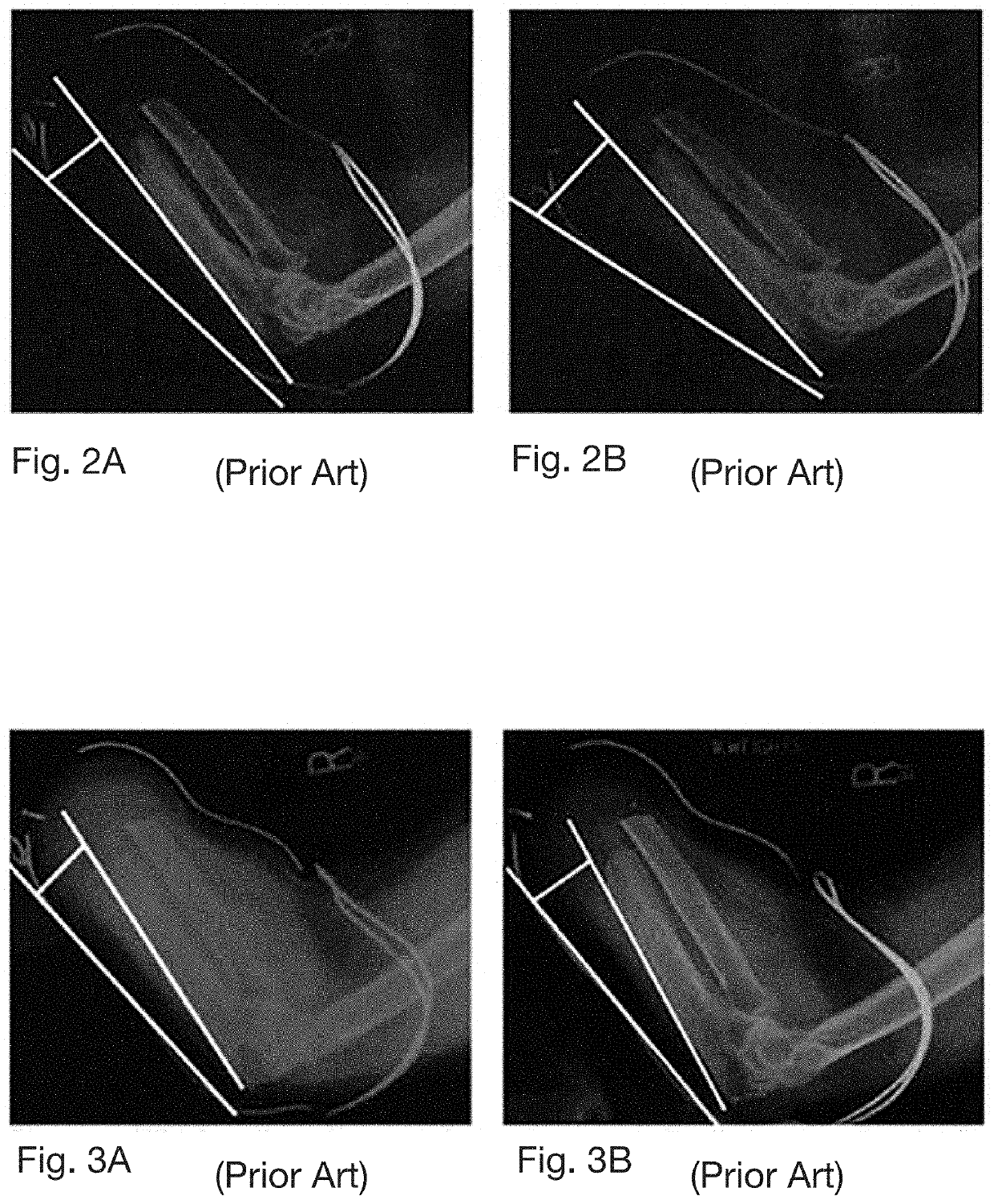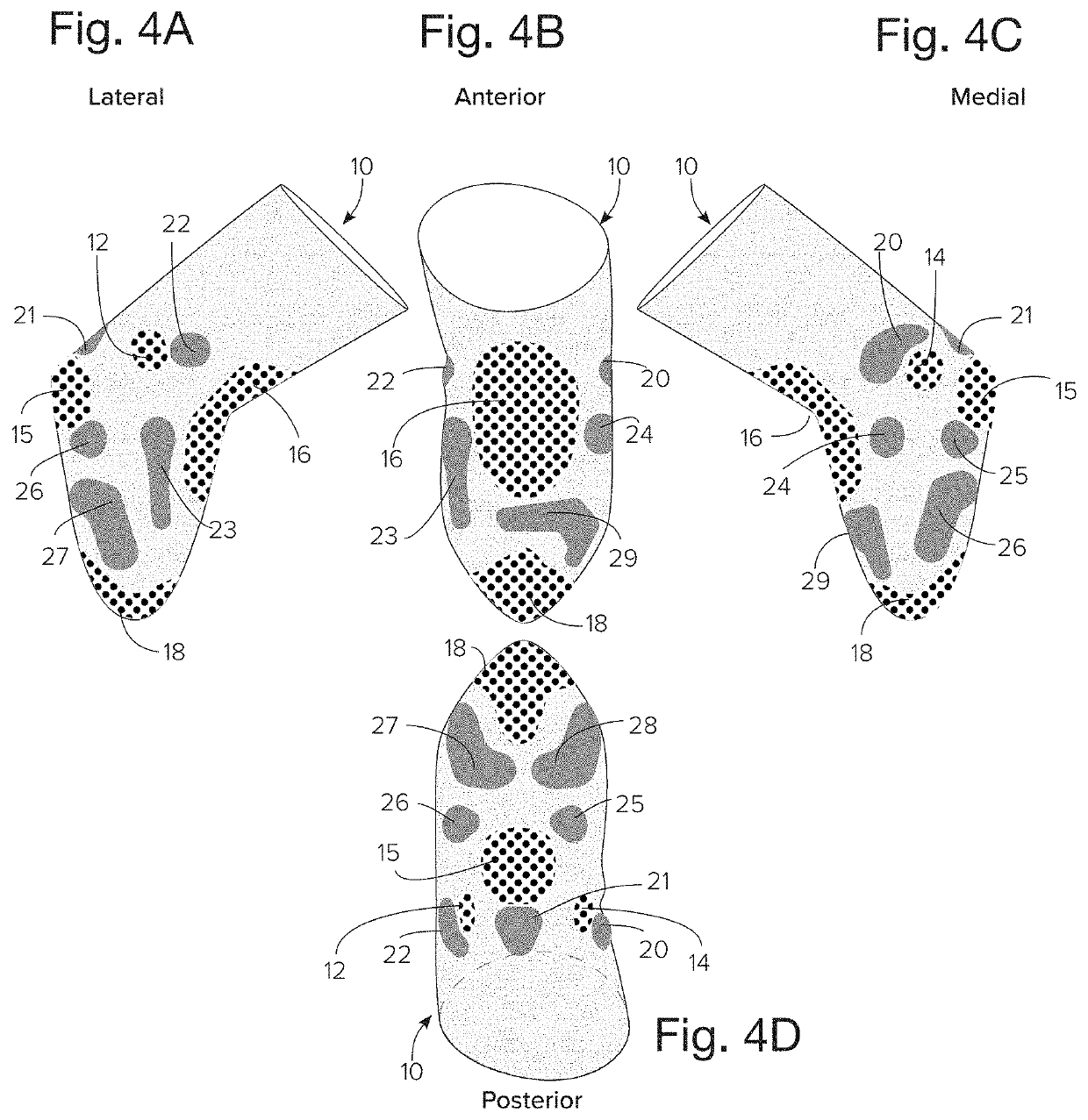Variable compliance prosthetic socket with breathable matrix
a prosthetic socket and matrix technology, applied in the field of limb prosthesis, can solve the problems of low or no load bearing capacity of conventional prosthetic devices, significantly reduced range of motion, poor heat and moisture management, etc., and achieve the effect of effectively engaging the boney prominences of the limb, easing the transition, and improving the engagement
- Summary
- Abstract
- Description
- Claims
- Application Information
AI Technical Summary
Benefits of technology
Problems solved by technology
Method used
Image
Examples
Embodiment Construction
[0040]Throughout this application, certain terms such as “distal” and “medial” have accepted medical meanings. To assist in understanding the teaching of this Specification, the applicant provides FIG. 1, a reference atlas of human body in Standard Anatomical Form (SAF) position with view directions including the terms “medial” and “lateral”; “proximal” and “distal”; and “anterior” and “posterior”. To further aid in discussion of various embodiments of the invention, the names for the locations of different levels of amputation have been identified, including “transradial,”“transhumeral,”“transtibial,” and “transfemoral,” are identified on the same figure.
[0041]To express the issues presented by conventional prostheses, the application provides FIGS. 2A and 2B. FIGS. 2A and 2B are a pair of radiographic images depicting a prior art monolithic Meunster Socket both under load and in a no load state, respectively while FIGS. 3A and 3B are a pair of radiographic images of a limb in enga...
PUM
 Login to View More
Login to View More Abstract
Description
Claims
Application Information
 Login to View More
Login to View More - R&D
- Intellectual Property
- Life Sciences
- Materials
- Tech Scout
- Unparalleled Data Quality
- Higher Quality Content
- 60% Fewer Hallucinations
Browse by: Latest US Patents, China's latest patents, Technical Efficacy Thesaurus, Application Domain, Technology Topic, Popular Technical Reports.
© 2025 PatSnap. All rights reserved.Legal|Privacy policy|Modern Slavery Act Transparency Statement|Sitemap|About US| Contact US: help@patsnap.com



